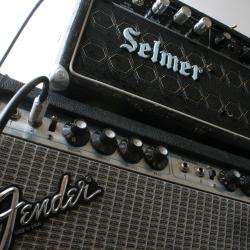 For this article a handful of simple hints to improve your guitar tone.
For this article a handful of simple hints to improve your guitar tone.
Tone is in your fingers, you all may have heard this comment before but it is so true: how you use your fingers translates directly to the sound you make with your guitar. The gear you use will only enhance the initial trigger of your fingers. In other words, if your technique is poor you will never achieve the results you could get.
Your tone will improve over time as when your guitar technique will improve. There are three simple things you can do to speed up the process:
Gauge of Your Strings:
Using a thicker gauge of strings will help you to achieve a thicker tone, it will also give you more power and volume. Once you start playing with thicker strings you may feel you may need to adapt your technique a little to get the best out of your sound. All of this will happen over time as long as you are aware of this. Playing your strings with a heavier attack will help to improve your tone as well. When using thinner strings, a heavier attack will make your strings go out of tune. This is very noticeable on your low E. Once you have gone up a few gauges you will no longer experience this problem!
Use Heavier Picks:
Plectrums, like strings, come in all kind of gauges. Most guitar players will start out with thin, light picks. Once your technique gets better you may want to go up in gauge with your picks. Using heavier picks will give you naturally more attack on your strings, more attack means more sound and more volume. Try various picks to see what you like. You may even want to use different picks for different playing situations.
Raising the Actions of Your Strings:
Playing with a higher action will also improve your guitar tone: The further the strings have to travel to the fret board the more sound they will produce. Once you have raised your action you may feel that you can hit those strings harder compared to when your action was lower ( and you were using thinner gauge strings)
When you check the tree points I mentioned above you will see that they are all related to each other: Thicker strings beg for heavier attack, thicker picks will help you achiever heavier attack and higher string action will allow you to play harder without the strings fretting out and causing too much fret buzz.
If you are not happy with your tone, try any of the above and adapt your playing to the new situation. You will love it after a while.
Happy playing time and hope to catch you all soon again for more guitar, and tone inspiration.
Eddie






